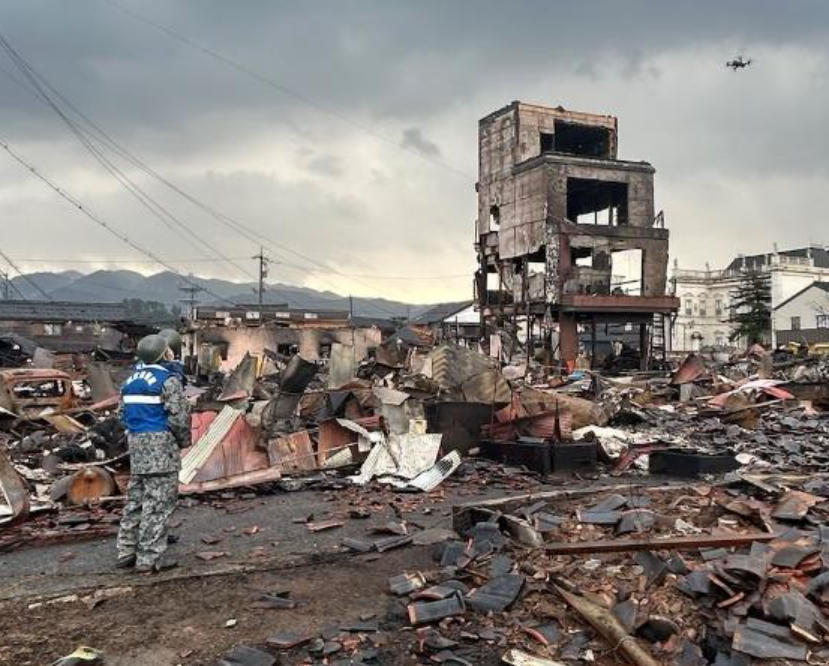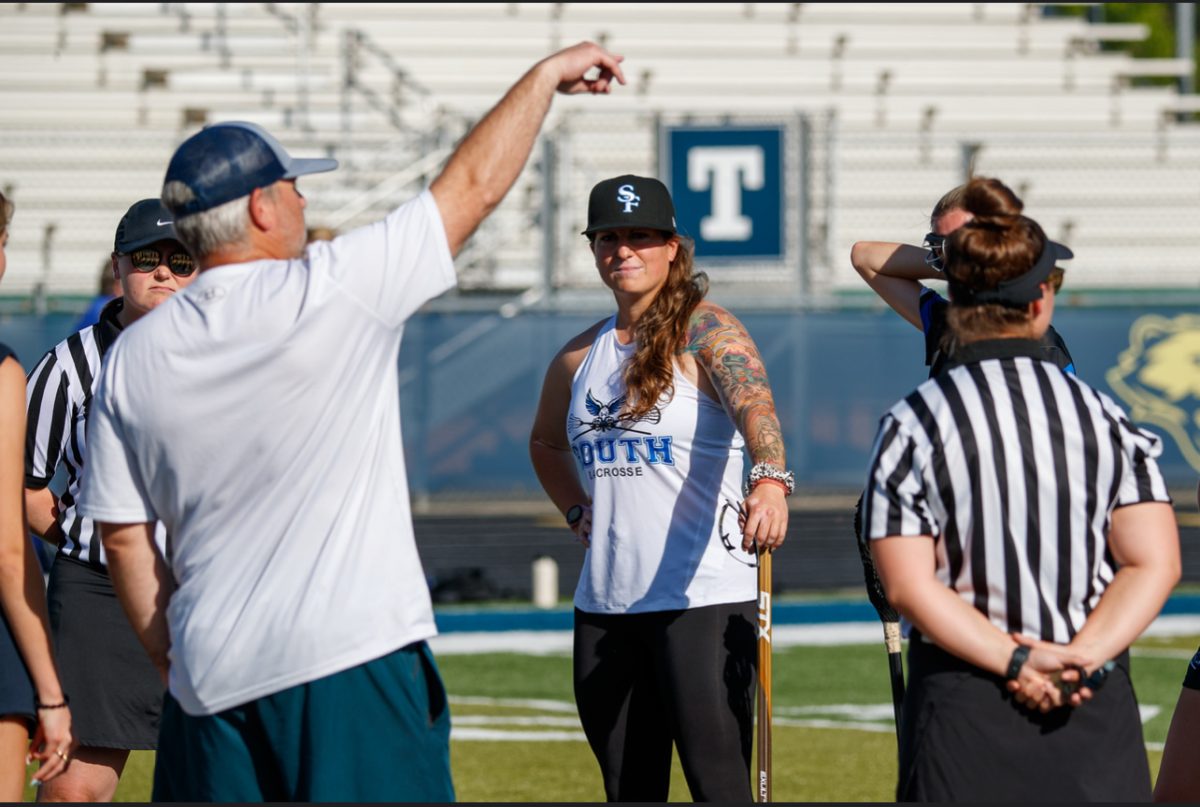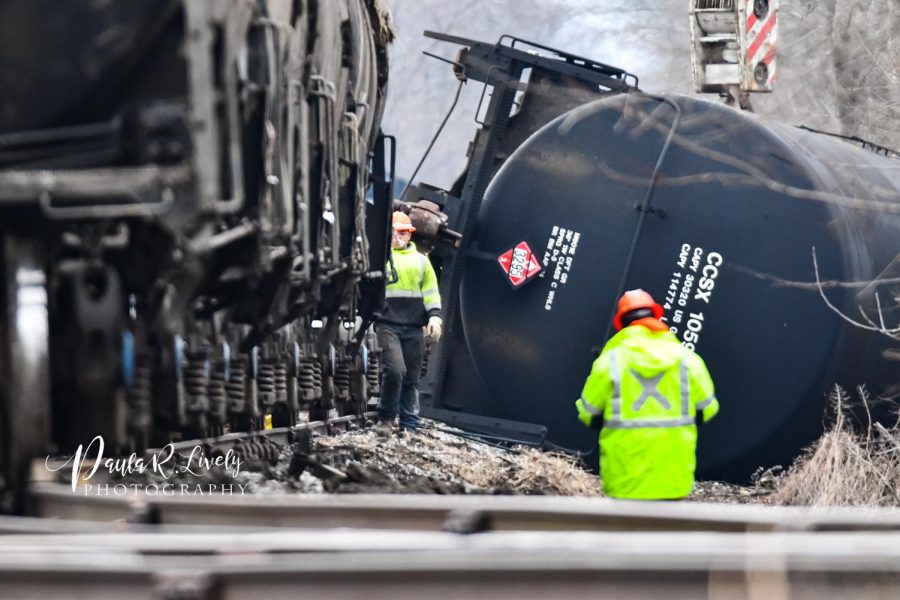On New Year’s Day in Japan, a series of disasters struck the Western Coast. Japan entered the new year with a 7.6-magnitude earthquake.
The earthquake was swiftly followed by a devastating tsunami, reaching 3.9 feet, and a plane crash at Tokyo airport.
The Devastating Earthquake
The earthquake tore through Japan’s Noto peninsula, tumbling towers and turning bustling city streets into wreckage.
The damage done to roads by the earthquake has rendered them un-traversable, preventing rescuers from reaching those in need. At least 30 villages and more evacuees are left without relief due to almost 100 obstructions in roadways and other paths.
Japan sits along the Pacific Ring of Fire and above four major tectonic plates, causing the country to be highly susceptible to earthquakes.
The Ring of Fire is a horseshoe-shaped string of underwater volcanoes stretching around the edge of the Pacific Ocean, passing through Japan, and it is an area in which about 90% of earthquakes occur.
Tectonic plates are pieces of Earth’s crust that are constantly moving atop the Earth’s mantle. When they slide past one another, they form a transform boundary, building up in those areas of Earth’s surface.
However, if this stress causes the tectonic plates to break or slip, an earthquake will occur.
Additionally, seismologist Susan Hough with the US Geological Survey stated that an earthquake of this magnitude could have disastrous aftershocks lasting for months.
While the recent earthquake was disastrous, it is not an uncommon occurrence in Japan.
In the hours since the earthquake, over 35 aftershocks with magnitudes above 2.5 have struck close to the epicenter of the earthquake, states the United States Geological Survey (USGS).
The current death toll stands at 29 killed in Wajima and 22 killed in Suzu, states Ishikawa Prefectural authorities. The disaster has left dozens seriously injured in the areas near the quake.
But the New Year’s disaster didn’t stop there.
The Tsunami That Followed
The devastating earthquake quickly triggered a tsunami reported to reach 3.9 feet in height at its first sighting.
The Japan Meteorological Agency (JMA) had initially issued a major tsunami warning but later revised it to advisory.
The initial “major” warning was Japan’s first since its tragic 2011 tsunami that made shocking headlines and took over 18,000 lives. The 2011 tsunami was triggered by a whopping 9.0 magnitude earthquake, in comparison to this year’s 7.6 magnitude earthquake.
Like the earthquake, the tsunami ripped through towns. Several videos on the platform X (formerly Twitter), showed buildings collapsing, roads fracturing, and shrines and temples in tatters.
The devastating damage came to a head as multiple buildings collapsed and went up in flames in Wajima, a town known for its lacquerware.
Relief efforts resulted in the evacuation of many to stadiums, auditoriums, schools and community centers during evacuation.
Meanwhile, the Japanese military sent 1,000 soldiers to rescue those trapped in their homes.
Almost 32,000 houses were left without power on Monday
The “Miraculous 18 Minutes”
On January 2nd, a passenger plane collided with a Japanese Coast Guard aircraft attempting to bring relief supplies to an area that had been impacted by the New Year’s Day earthquake.
The Japan Airlines Flight 516 plane had been cleared to land on runway 34R at the Haneda airport. However, when they landed, the “pilot felt a sudden shock” and lost control. The passenger plane had crashed directly into the Coast Guard plane.
The pilots of JAL 516 didn’t even realize there was fire on the plane until the cabinet attendant had informed them. While at least 17 people on the flight were injured, all 379 people onboard had safely evacuated in a “miraculous 18 minutes.”
Unfortunately, not the same can be said for the Coast Guard plane. The crash had killed five of the six people onboard and left the pilot in serious condition.
Japanese authorities report that while JAL 516 was cleared to land, the Bombardier Dash-8 coast guard plane was directed to “taxi to holding point C5” where it should’ve awaited approval to take off on the runway.
However, the captain of the plane had informed investigators he was permitted to enter into the runway where the crash occurred.
What’s Happening Now?
With the devastation of the New Year’s Day earthquake, Japan’s Prime Minister Fumio Kishida’s cabinet announced that the emergency budget reserves allocated for the 2024-2025 fiscal year will be doubled in order to support the Noto Peninsula in its recovery from the natural disaster.
Additionally, a disaster relief package is in the process of being composed to provide makeshift shelters, infrastructure, and income for some families. This relief package is planned to accumulate more than 100 billion yen by the end of the month.
Other organizations are coming together as well to provide relief to those who were impacted. One such organization is the Nippon Foundation, which is providing affected areas with “fuel, generators and portable showers.”
Sources:
“Japan earthquake: The tiny firm that alerts millions about disasters” by Mariko Oi, from BBC
“Five dead after JAL airliner crashes into quake aid plane at Tokyo airport” by Daniel Leussink and Satoshi Sugiyama from Reuters
“Japan earthquake: race against time to find survivors” by Kiyoshi Takenaka and Sakura Murakami
“Why does Japan have so many earthquakes and tsunamis?” by Michelle Ye Hee Lee from The Washington Post
“Plate Tectonics and the Ring of Fire” from National Geographic
“‘Battle against time’ to find quake survivors as Japan lifts tsunami warnings and death toll rises” by Helen Regan, Sahar Akbarzai, Chie Kobayashi and Mayumi Maruyama from CNN
“January 1, 2024 Japan earthquake” by Helen Regan, Sana Noor Haq, Antoinette Radford and Elise Hammond from CNN
“Powerful earthquakes in Japan leave at least 62 dead. Fears grow about saving people still trapped” by Hiro Komae and Yuri Kageyama from Associated Press
“Massive earthquake hits Japan, triggering tsunami warnings” by Emiko Jozuka, Hanako Montgomery, Chie Kobayashi and Alex Stambaugh from CNN
“Powerful quake rocks Japan, nearly 100,000 residents ordered to evacuate” by Tim Kelly, Satoshi Sugiyama and Sakura Murakami
“On This Day: 2011 Tohoku Earthquake and Tsunami” from National Centers for Environmental Information
“Tsunami Strike Japan” from National Oceanic and Atmospheric Administration
“Powerful earthquake off Japan’s west coast prompt tsunami warnings” from CBS News
“Japan Airlines jet bursts into flames after collision with earthquake relief plane at Tokyo Haneda airport” by Mayumi Maruyama, Teele Rebane, Tamara Hardingham-Gill and Emiko Jozuka from CNN
“Japan jet crash: Airline pilots unaware of cabin fire until crew told them” by Chie Kobayashi & Joel Guinto from BBC
“Japan Airlines plane burns up at Tokyo airport after collision” by Ryohtaroh Satoh and Akira Kitado from Nikkei Asia
“Japan doubles planned emergency budget reserves to back Noto quake relief” from Reuters
“Responding swiftly and appropriately when disasters strike” from The Nippon Foundation






















